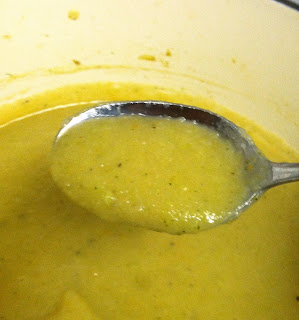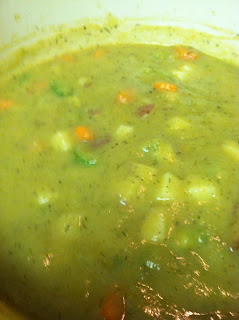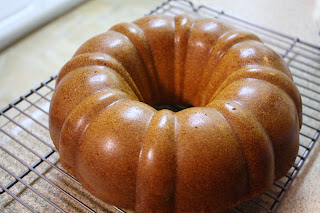Here we have installment number two in Linda and Lilly's spice project. While I'm not a big fan of licorice flavored things, I do really like tarragon. When I go to Soup Plantation, I almost always get some of their tuna and tarragon pasta salad (and I'm not a big fan of fish either, but the tarragon makes it). So, I was super excited when this packet showed up. I made one of the recipes shortly after it arrived and loved it. That will be the next entry. This will just be the information and the recipes that were sent.
Tarragon
Tarragon, or Artemisia dracunculus, is a perennial herb in the
lettuce family and is related to wormwood. Native to northern Europe,
Siberia, Russia, and parts of Asia, tarragon went from relative
obscurity in the cooking world to the forefront of French cuisine in
just a few hundred years – a remarkable accomplishment considering its
competition.
Characteristics
Tarragon is a small, attractive herb with slim vertical stems and
long, narrow dark leaves which are green in color. The herb is native
almost exclusively to the Northern hemisphere, and has spread from its
cultivation in Europe and Scandinavia to parts of North America as well.
The plant prefers dry, poor soil which typically is unfriendly to
delicate herbs – excess moisture in the soil can actually lead to
frostbite and death in colder climates, so dry soil protects the plant.
There are two varieties worth mentioning in reference to the kitchen –
French tarragon and Russian (or Siberian) tarragon. The French is held
in higher esteem because of its milder flavors and glossy appearance
(the herb has smooth, deep green leaves). Russian tarragon is a suitable
substitute in most cases, but is said to have an “inferior” flavor by
comparison; this variety can be identified by its rough leaves and light
green color.
Tarragon is similar in flavor to anise, with sweet and heady notes and a fragrant aroma.
Common Uses
The herb is, compared to kitchen plants which have been used for
thousands of years, relatively new to many world cuisines. It has found a
semi-reliable place in Mediterranean, European, and North American
cookery. However, tarragon is most commonly associated with French
cuisine due to its placement in an herb blend referred to as the “fine
herbes” (fresh parsley, chives, chervil, and tarragon); it is also used
in well known sauces such as Bearnaise and in dishes like tartare.
Tarragon pairs well, when used correctly, with fish, lobster, red meats,
chicken, some roasted vegetables, fresh salads, and tomatoes; dressing,
marinades, soups, and vinegars can also be enhanced with a bit of
tarragon. It also goes nicely with eggs – the traditional French herb
omelet demonstrates this nicely.
Tarragon contains a numbing compound, eugenol, which makes it a good
natural remedy for minor pain-related symptoms such as toothache or sore
gums (the Greeks used the herb this way). It was also classified for a
time under an archaic school of medicine which claimed that certain
herbs could cure ailments inflicted by animals or offenders similar to
the plant; tarragon, with it’s long, narrow leaves, was assumed to treat
snake bites and wounds from venomous animals because it looked like
fangs…there isn’t much information on how successful the treatment was,
perhaps because the practitioners of this school of medicine didn’t live
very long…
Use and Storage
Tarragon loses its flavor with unfortunate speed when dried –
preserving in herb in vinegar is a good option for those wanting to use
its essence for cooking when the leaves are unavailable. Tarragon can be
stored for a short time in the fridge, but is sensitive to cold and can
deteriorate quickly. Dried tarragon is less potent but can be purchased
in many fine grocery stores and supermarkets.
It is best to use tarragon with a light hand – the herb can easily overpower all other elements in a dish.
Use It (How to/where)
• along with chives, parsley, and chervil to season French dishes
• in egg dishes and delicate omelets
• infused into vinegar to season many dishes
• in salad dressings and marinades
• to season fish, lobster, and seafood
• paired with chicken and young fowl
• with red meats and some roasts
• in soups and stews
• in sauces like Béarnaise
Recipes
Spring Vegetable Soup with Tarragon (Serves 4)
Food & Wine
7 cups water
10 small red potatoes, quartered
2 medium carrots, sliced 1/4 inch thick
2 celery ribs, sliced 1/4 inch thick
1 medium onion, coarsely chopped
1 large leek, sliced 1/4 inch thick
1/2 tablespoon kosher salt
1 pound green beans, cut into 1-inch lengths, or frozen peas
2 tablespoons chopped parsley
1 tablespoon chopped tarragon
Freshly ground pepper
Directions:
In a large pot, combine the water with the red potatoes, carrots,
celery, onion and leek. Bring to a boil. Add the salt and simmer over
moderately low heat for 30 minutes.
Add the green beans and simmer until tender, 3 minutes. Stir in the parsley and tarragon. Season with pepper and serve.
Notes
One Serving 163 cal, 0.5 gm fat, 0 gm sat fat, 36 gm carb, 6.8 gm fiber.
Tarragon Omeletta
The Perfect Pantry
10 large eggs, well beaten
3/4 cup shredded cheese (gruyere, cheddar, fontina, or your favorite mix)
3 Tbsp minced fresh herbs (tarragon, parsley, thyme, basil, or a mix) OR 4 tsp dried herbs
Large pinch of sea salt
Large pinch of fresh ground black pepper
2 Tbsp olive oil
Directions:
In a large bowl, combine eggs, cheese, herbs, salt and pepper, and beat
lightly with a whisk to combine. Heat a large frying pan over lowest
heat; add the oil, then pour in the egg mixture. Cover, and cook for 5
minutes. Lift the lid, and with a spatula lift the edges of the omeletta
and let some of the uncooked egg from the top run underneath. Replace
the lid and continue cooking over low heat for another 3 minutes. Again,
lift the edges and let the uncooked egg on top run underneath. Cover,
and continue cooking until the egg is set, another 5 minutes or more. If
you prefer to have the top browned, either flip the omeletta and cook
for 1 minute, or place under the broiler until the top is lightly
browned. Serve hot or at room temperature.
~*~*~*~*~*~*~*~
I made the soup with minor additions. It was delicious and I will be sharing that next. I need to see if I can find the picture of the finished product. I encourage everyone to try tarragon. It's a great herb. The smell of it makes me happy.
So, get some tarragon, try one (or both) of these recipes and tell us what you think!
Thanks, and happy eating!



























